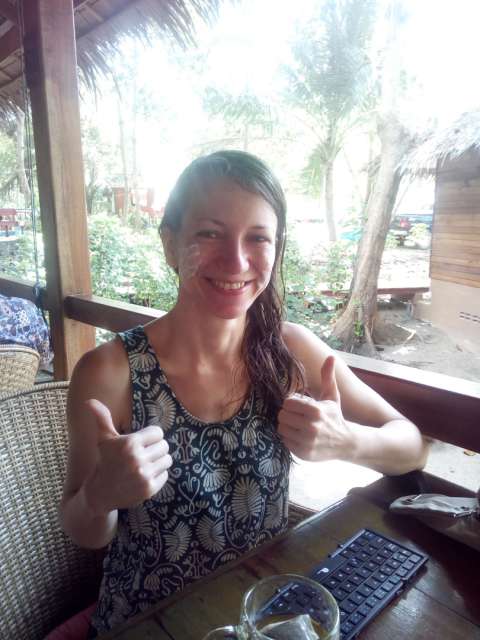
Über_Südostasien_zurück_zu_mir
vakantio.de/ueber_suedostasien_zurueck_zu_mir
Koh Tao-chen 🐠🐙🐚🐡🐟⚓♥
Cyhoeddwyd: 10.05.2017
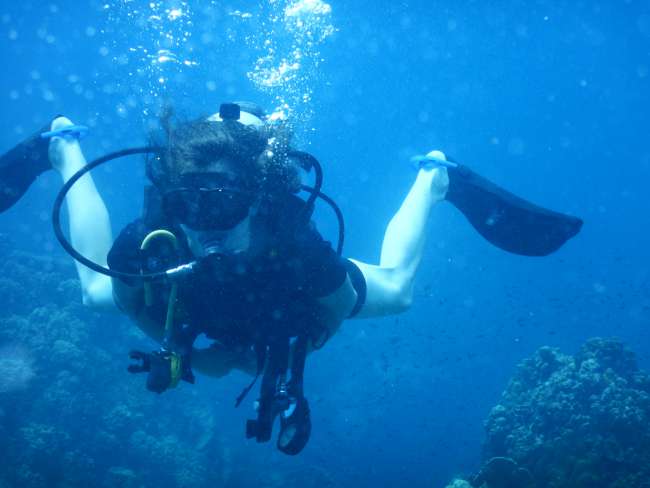
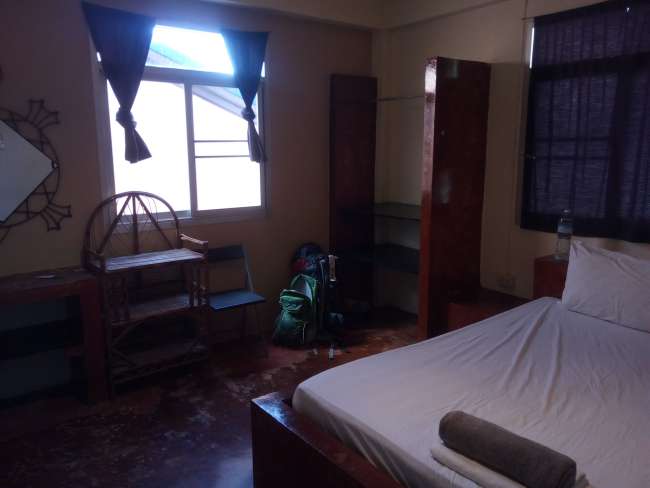
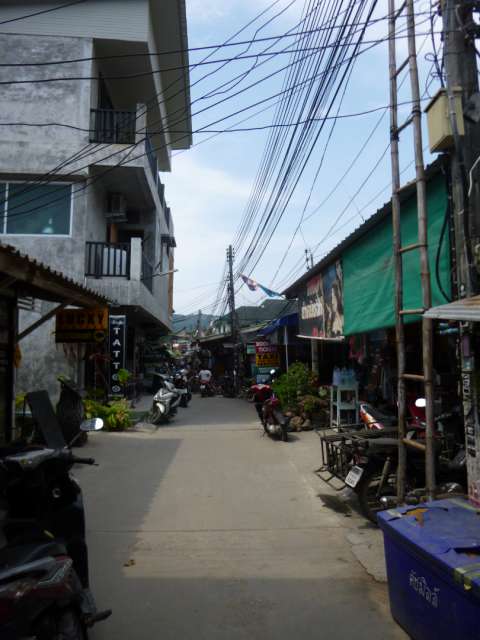
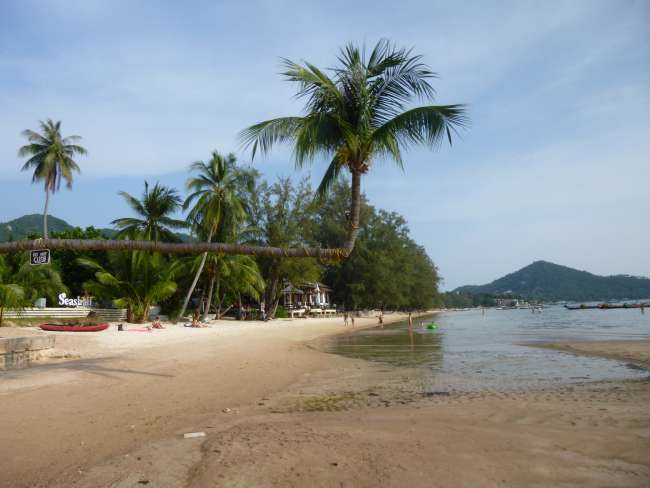
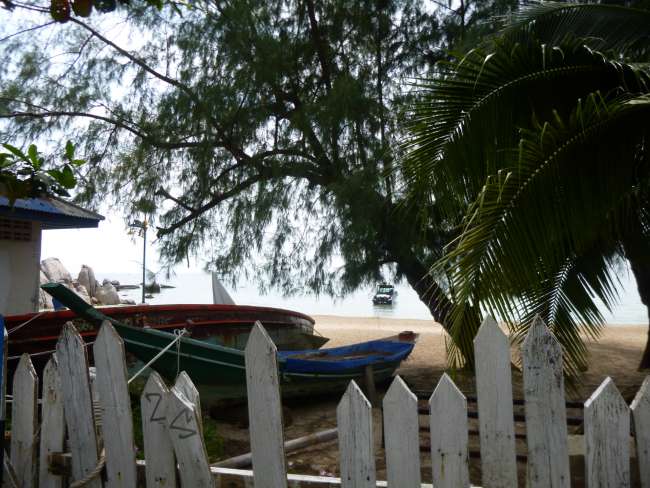
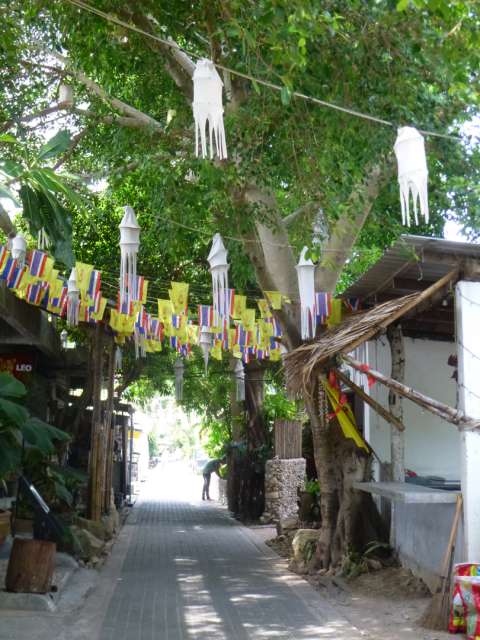
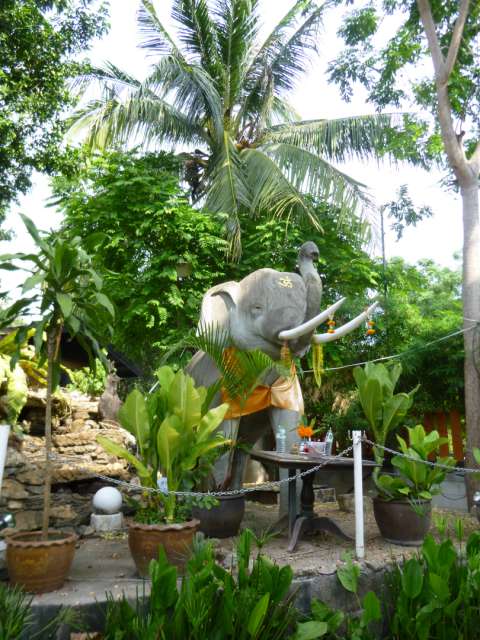
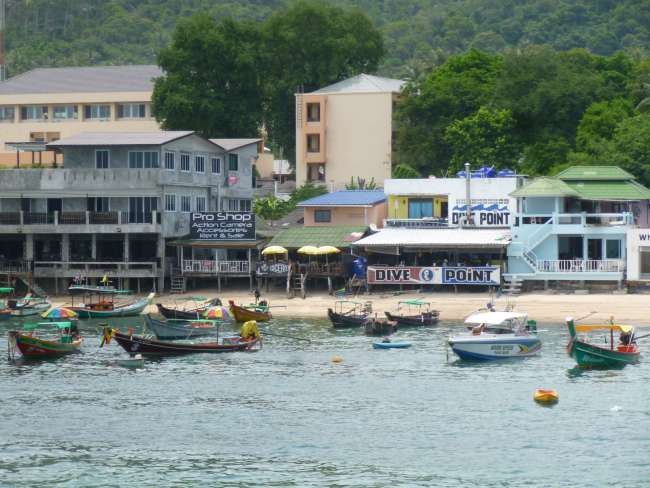
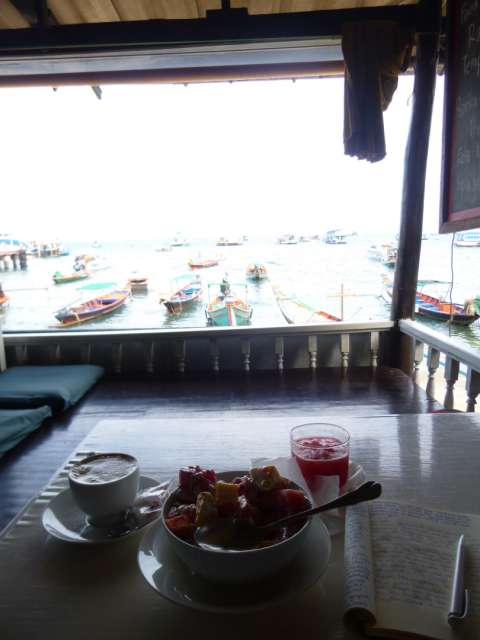
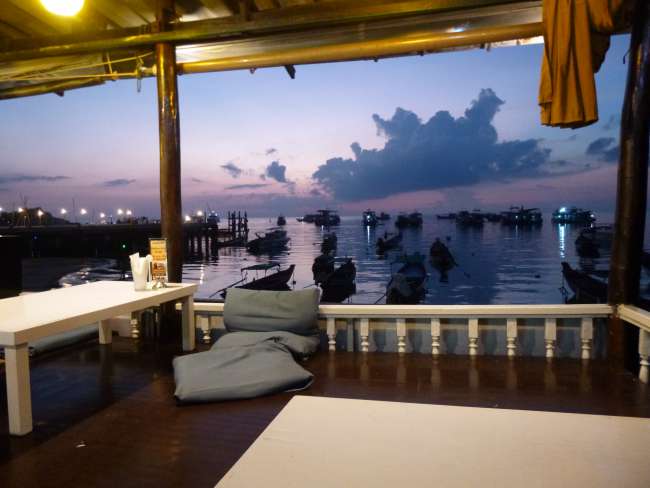
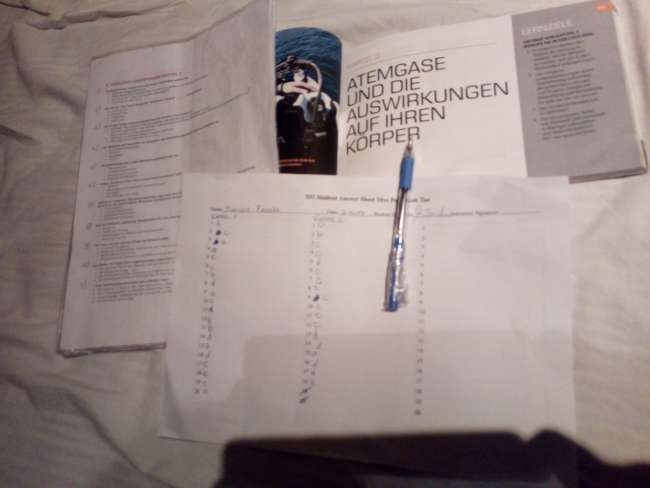
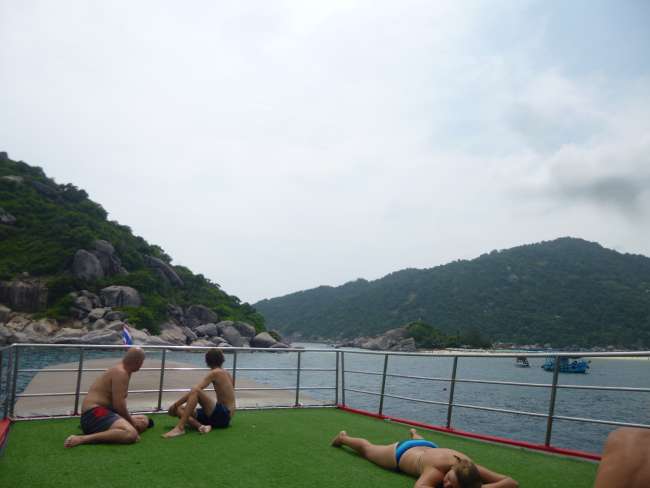
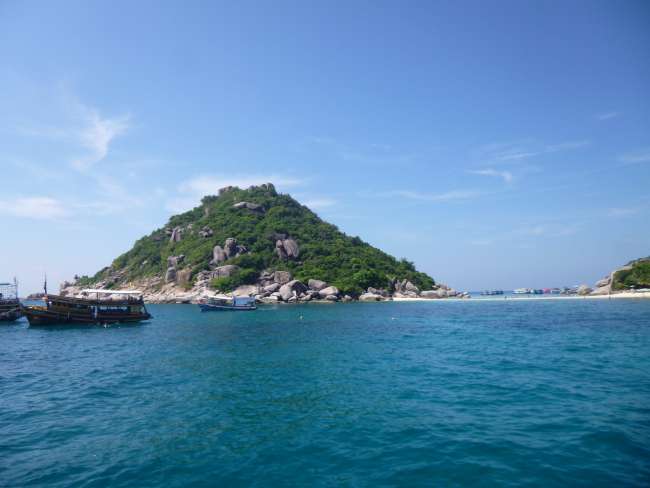
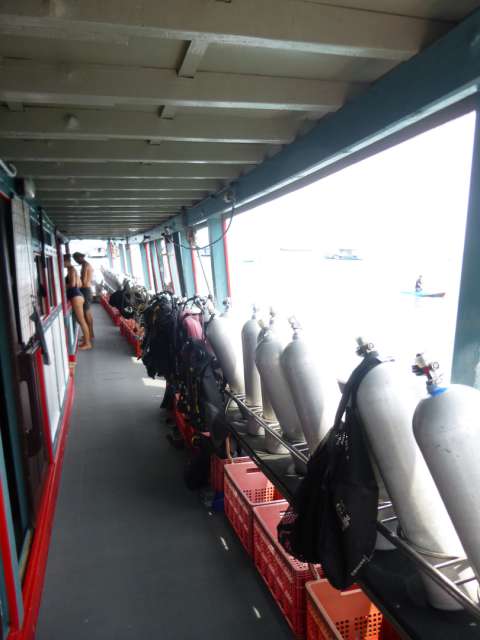
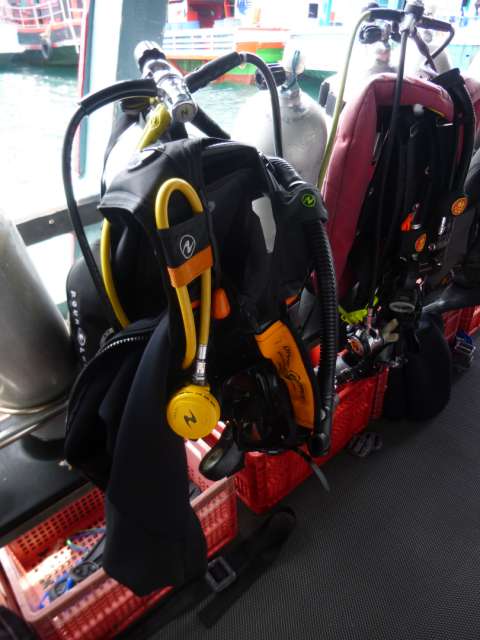
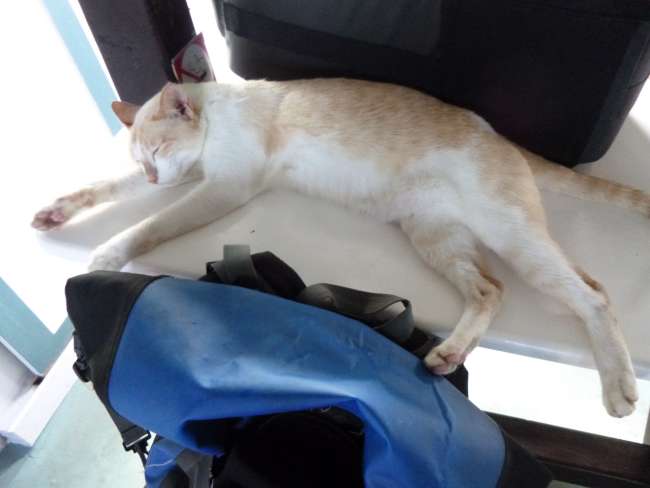
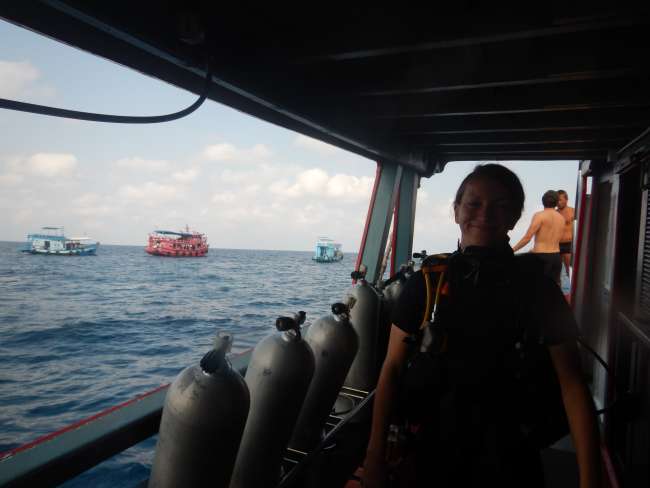
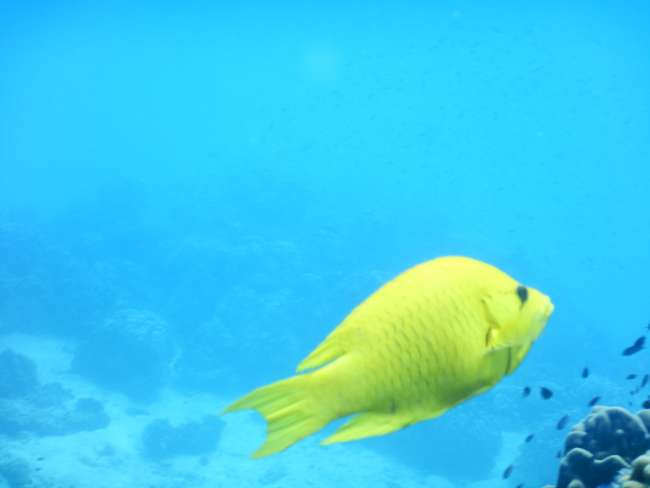
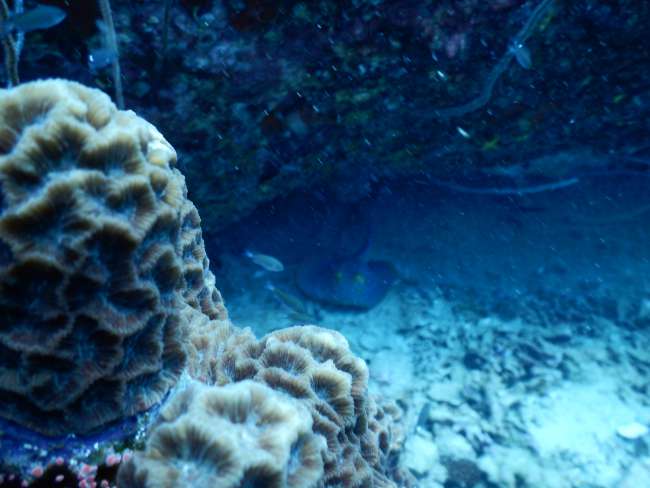
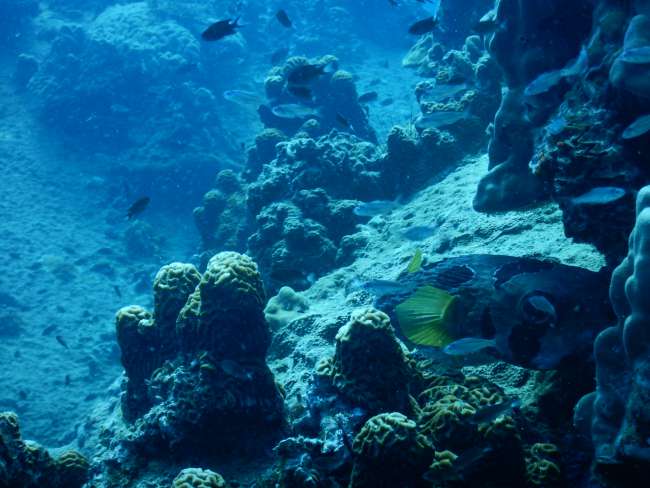
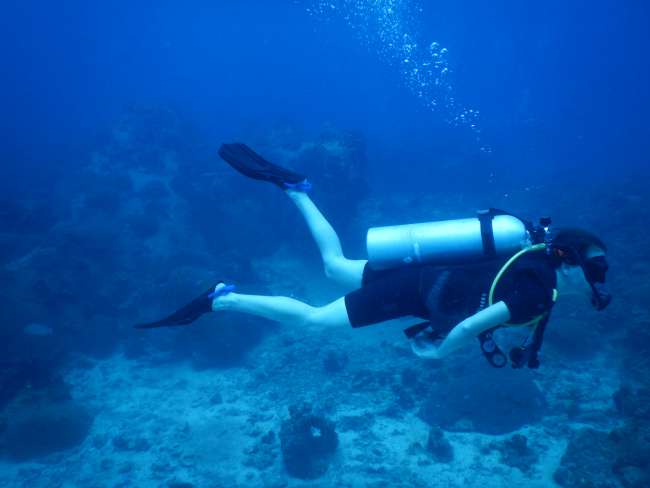
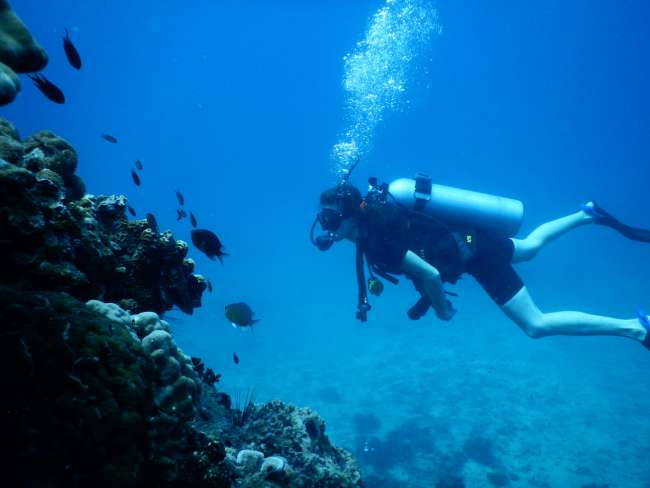
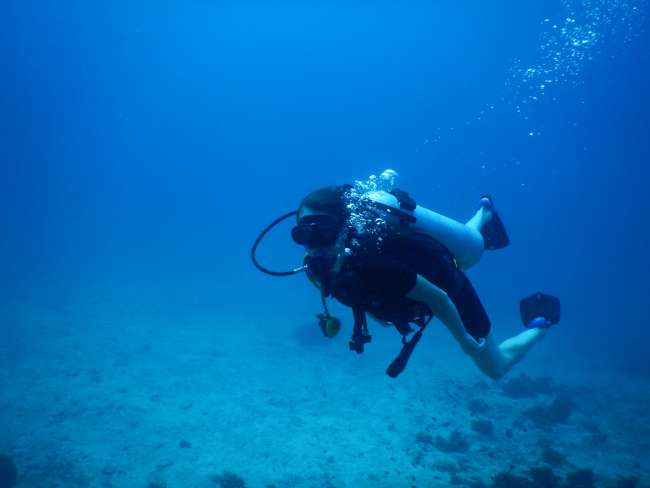
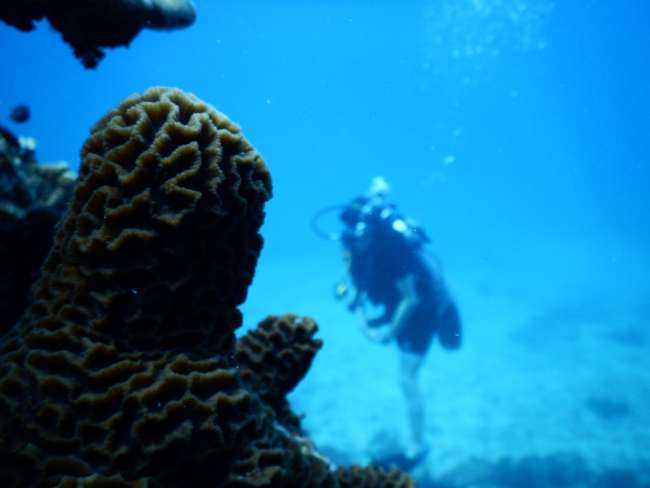
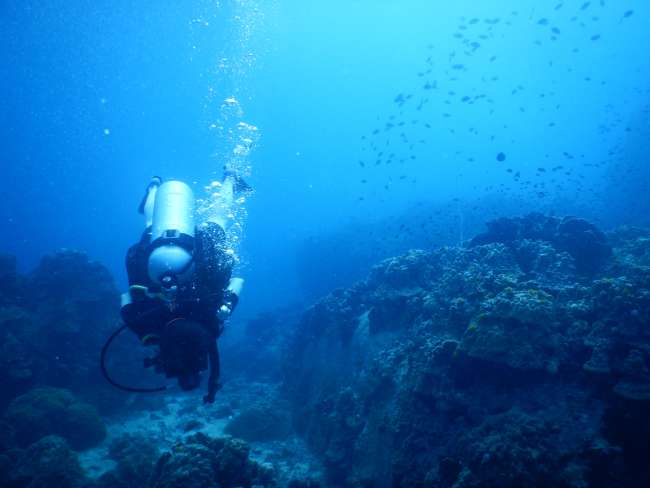
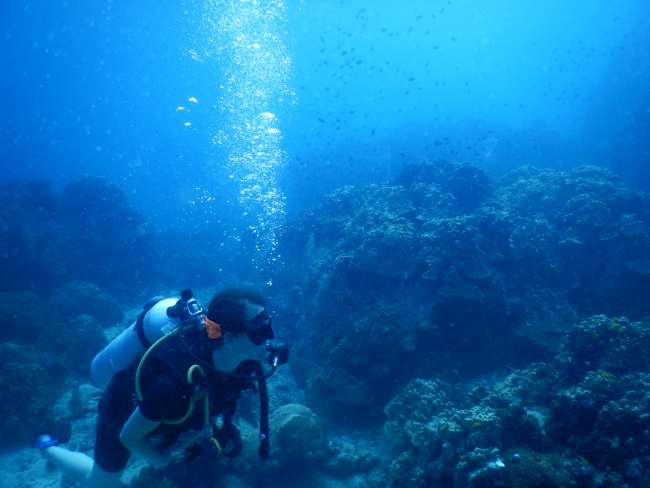
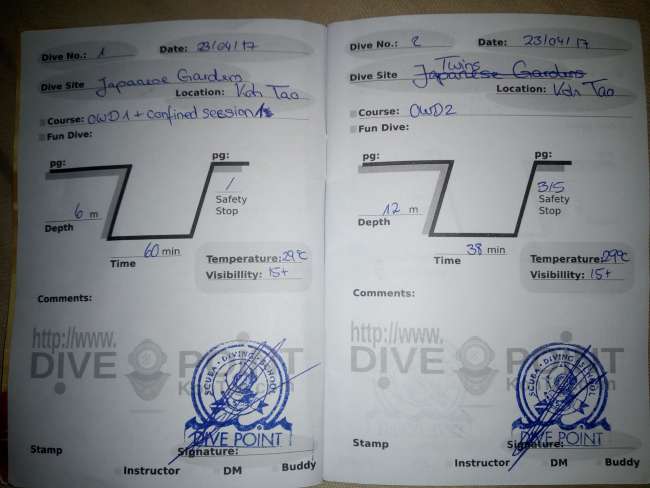
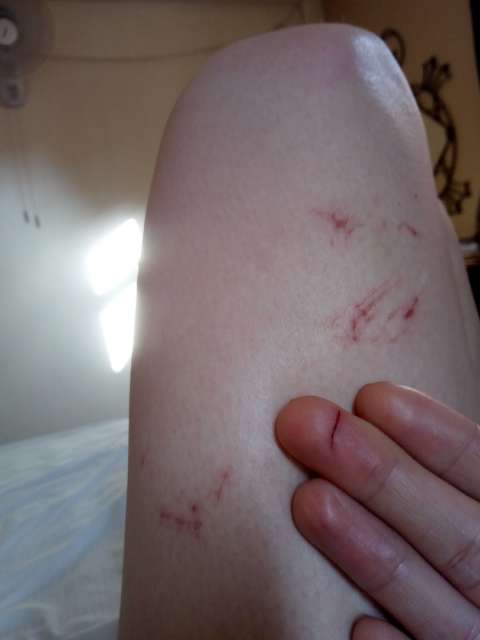
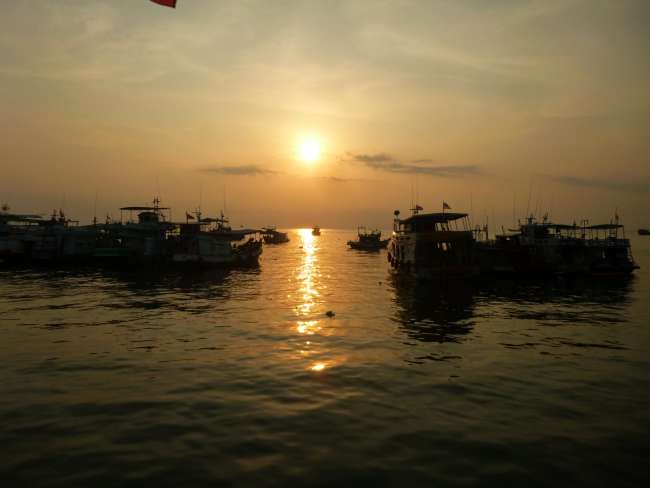
Tanysgrifio i'r Cylchlythyr
Please take a moment to appreciate my language joke 😉.
Once again, the adventure I want to tell you about is over a week ago. It's about a new - unfortunately expensive and hardly feasible in Germany - hobby - diving!
I was warned - danger! addictive! - they said. I didn't listen and now it's too late, it has happened to me. Wow! What a new world opens up to you, I could rave about it for hours... But one thing at a time.
Koh Tao is the diving island of Thailand. There are 150 diving schools on this little island, the competition ensures low prices, you probably can't get your diving license cheaper anywhere else, not even on the other Thai islands, I have compared.
Fortunately, the lovely Eva at Sanctuary gave me the tip to choose divepoint as a school. I gladly followed this recommendation because the huge offer overwhelmed me. I did not regret this decision. The owner is Austrian and many employees speak German, so I was able to handle the theory part in our beautiful language.
The beginner course consisted of four days for me. On the first day, I watched a video, answered questions about it, which I could also look up in the corresponding book. Then I went through the whole thing again with Nathalie, a diving instructor, there were new information and I had the opportunity to ask questions. Afterwards, the theory test followed as a requirement for the diving license. If you were attentive beforehand, it is easy to pass. I won't bore you with the details now, although they are certainly relevant for practice, especially when it comes to risks.
Then three days with two dives each followed. Andi initiated a Dutch diving student and me into the secrets of practical diving. Each dive included tasks that we discussed on the boat beforehand and that Andi demonstrated underwater before it was our turn.
THE FIRST TIME UNDER WATER
So far, my experiences did not go beyond snorkeling. I didn't know what to expect, was full of anticipation... First of all, we had to show that we feel comfortable in the water. So we jumped into the 30 degrees warm water and swam leisurely around the boat for three rounds. Then it became serious. The first hurdle was squeezing into the wetsuit, a shorty indeed and the right size, but as a second skin, a challenge to put on. Then we equipped our weight belts, without them you won't even get under water. They also counteract buoyancy, because an uncontrolled ascent - shooting to the water surface - can end dangerously. Beginners tend to get a little more weight because they are often not yet practiced in balancing and controlling the depth, you have to earn weightlessness first. I started with 4.5kg and now I'm at 2.8kg, which works very well for me underwater. In addition, there are another 18kg due to the rest of the equipment, in combination with fins, you are as elegantly on the go here as a penguin, under the water surface, well - almost... The jump into the water in full gear is also practiced - you can either take a big step forward or fall backwards into the water like a plank, mask and mouthpiece are in use.
The first descent was exciting. Our buoyancy vests were filled with air, to descend we had to release this air. Said, done - heartbeat... Unexpectedly, I felt a feeling of fear, slight panic. I was worried that I wouldn't get enough air and imagined that breathing was difficult and that it was impossible to breathe underwater, it can't work - help!!! It is hard to describe, in the end, a lot happens in your mind. We were only two meters deep the first time, but it was borderline for me, I gave the signal twice that I wanted to ascend, and so we did. Fortunately, Andi is an extremely patient and empathetic diving instructor. One task was to completely fill our masks with water underwater and then empty them there as well. I had respect for that... Meanwhile, it is a quick move, a short exhale through the nose, which you do incidentally while absorbing the action around you.
Because I had no idea about balancing, I got a few scratches on my right thigh during the first dive, it seemed like the corals below me were getting closer, at least now I know from my own experience that they are razor-sharp.
With every dive, I became more relaxed, preserved more and more calm during the exercises. We practiced emergency ascent with a diving partner and alone; communication underwater (jokes are a challenge, I tell you); what to do if the air runs out; controlling depth; controlling and reducing oxygen consumption, so the fun can last longer; using a dive computer; how does the current feel; how does equalizing the pressure work (you are surely familiar with the pressure on your ears) etc. After the exercises, there was always time to go out and explore, we paddled after the good Andi cheerfully.
On the first two diving days, we didn't go deeper than 12m, and we were always close to the seabed, which gave me a feeling of security, there was a limit downwards. On the third day, we were not supposed to go deeper than 18m, but there was no bottom in sight, it only appeared at around 30m or even later. My heart was beating again, during the first dive it felt spooky to me, but I could enjoy the second one much more. Holding the depth was still a small challenge, but it got better steadily, it just takes experience.
After six dives, Andi congratulated us on our diving license. He was pretty sure that we wouldn't kill ourselves while diving with a partner. It rarely happens, but occasionally students don't get licensed in the end, they simply need a little more time.
DIVING LICENSE - AND NOW?
So I was officially an open water diver and couldn't imagine stopping and leaving Koh Tao. I decided to continue with the advanced course right away and had the privilege of individual lessons. The high season was coming to an end, it was getting quieter on the island, which sometimes felt a bit lonely, but in terms of the lessons, it was a stroke of luck. Two more days with five dives followed. I refined my ability to stay balanced, to maintain my height in the water, to float, did a night dive, and a deep dive down to 30m depths. I was supposed to solve a simple math problem there to see if my brain is still functioning normally (whatever that means) or if there are any signs of nitrogen narcosis. You are then supposed to be as if you were drunk or euphoric and reckless - fortunately, I didn't notice any difference. The course also included navigation - that was an absolute disaster! That is really not my strength, I even get lost on land sometimes. I did use the compass correctly, but I still couldn't swim in a square. I didn't make it to the starting point three times. My goodness, how frustrated I was - getting angry underwater - an interesting experience. So far, it's the only dive I didn't enjoy. I was reassured that most people don't succeed at the beginning. Try it out, it sounds easier than it is. For now, I'm quite willing to just follow someone who knows.
Now I am an advanced adventurer, which is very cool because I can dive down to 30m instead of just 18m, which is especially useful for exploring shipwrecks up close. After a total of five days of training, there was another day with so-called fun dives, and I enjoyed not having to fulfill any tasks, from the very beginning, it was about exploring, delightful!
HOW IS IT NOW - DIVING?
Wow! Insanity! Indescribable! So much fun! Those of you who have already had this wonderful experience surely know what I mean.
One moment you are still above the water surface, the next you slowly sink down and are immediately in a different world, forgetting everything else, worries, fatigue, etc. You breathe the air from the oxygen tank, have become accustomed to the feeling, you see and hear the air bubbles rising when you exhale. If there are divers directly below you, their air bubbles tickle you a little, but at the same time, it can also be annoying because you can't see anything. By now, you do the pressure equalization automatically.
Everything feels like in slow motion, as a diver, you are not in a hurry, keep your arms as still as possible and make slow fin strokes, this way you see more and consume less air. Once you have mastered floating, you are completely free in three-dimensional space. There are divers above, below, and next to you, all 'flying', including you, you can dodge in all directions. It was exciting during the night dive. I only saw the light beams from the flashlights of the other groups, it was as if many little UFOs were on the move.
You turn onto your back, see the water surface above you and think - amazing, so much water around me, but it feels like I'm flying, as I said, everything in slow motion... You turn on your side, turn upside down to get a better look under a ledge, you play with weightlessness and have a lot of fun.
At the beginning - especially after my first painful encounter with the corals - I always tried to keep a sufficient distance, especially when there was a current. I didn't have enough control, fine-tuning didn't work reliably yet. Now it's like I can swim controlled, slow, and cautious, swim closely to the object of my curiosity and stay there, not panic immediately when I feel the current pushing me against the reef. Dear ones, this greatly increases the fun, the beauty of diving is that you make quick progress.
I am particularly fascinated by the clownfish (yes, the little Nemos). They remain loyal to their anemone, retreat there, and at the same time, they are very courageous. I like to observe them from up close, mostly from above. The largest of the bunch swims purposefully towards my eyes and it's as if he's saying - This is my anemone, you have no business here, you strange giant fish... During one dive, I swam into a school of barracudas and couldn't stop marveling. Parrotfish, sea cucumbers, moray eels, small rays, sea urchins, triggerfish, pufferfish, trumpetfish, jellyfish, sea snakes, turtles, and so many other marine creatures have already crossed my path, I have already admired my first seahorse. You can only see all of them in aquariums with us, while diving in Thailand, you are a guest in their world. You observe in awe, reverence, fascinated, and try not to disturb...
What I still find remarkable is that controlling the upward and downward movement is not so much about the air in the buoyancy vest, but more about the lungs. Depending on the pressure (i.e. depth), the air in the vest has to be adjusted slightly, once that is done, you use your lungs like fish use their swim bladder. To ascend slightly, you breathe slightly more in and then continue normally, to sink, you exhale stronger and then continue normally. I take great pleasure in experimenting with this. Drifting in the current is extremely relaxing, while swimming against it is unfortunately less enjoyable.
Originally, I wanted to spend the second half of my trip far away from the sea. That's out of the question, no longer an option, I want to dive, dive, and dive even more. I have already booked flights to a beautiful place that was not on the plan originally, but I'm looking forward to it even more now. When the time comes, I will let you in on it 😊.
If you are even remotely interested in diving and have the opportunity, seize it, you won't regret it. I'm sure of it. By the way, I'm happy to be a diving partner 😉.
Tanysgrifio i'r Cylchlythyr
Ateb
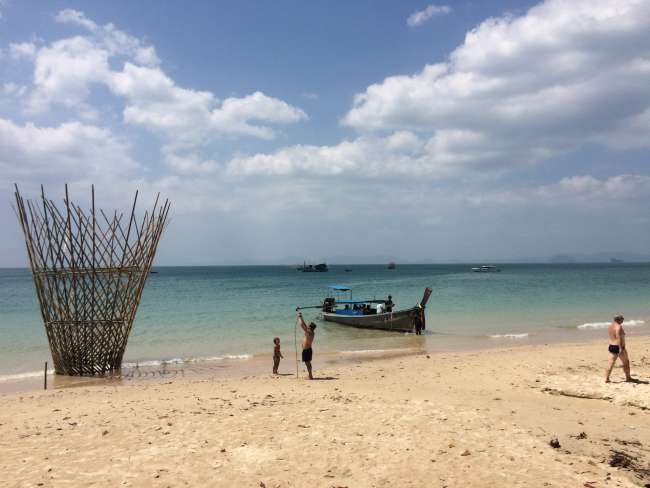
Adroddiadau teithio Gwlad Thai
